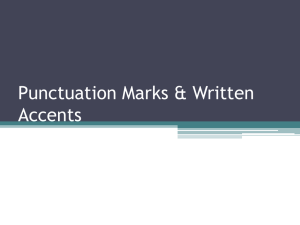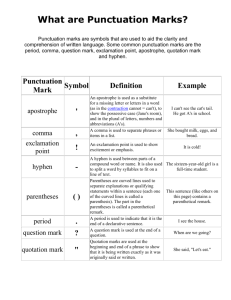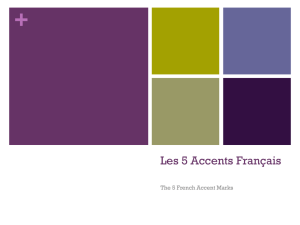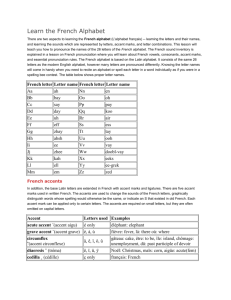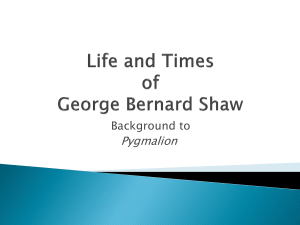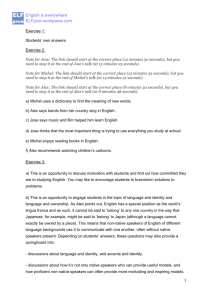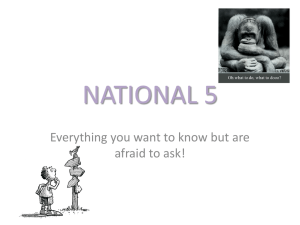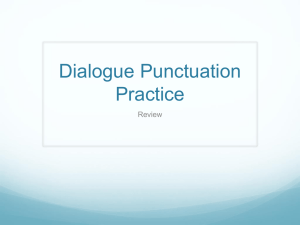Punctuation Marks & Written Accents
advertisement
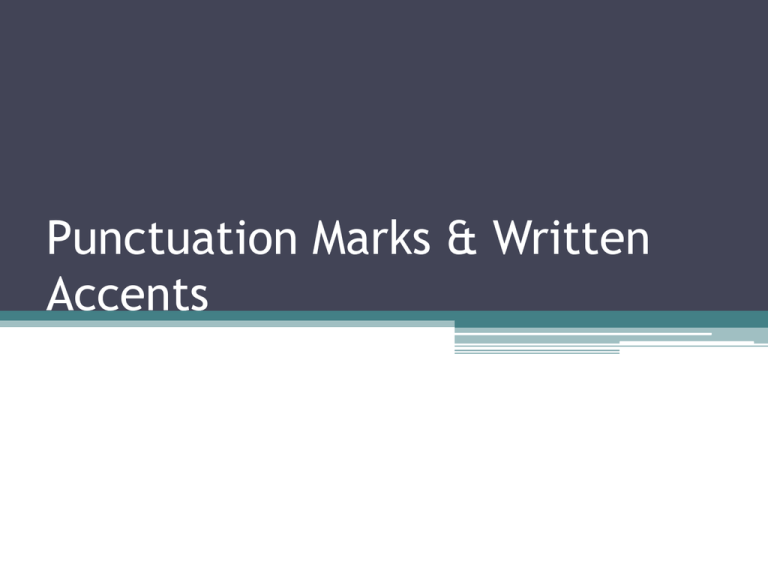
Punctuation Marks & Written Accents Punctuation Marks & Written Accents • In Spanish, upside-down punctuation marks, such as ¿ and ¡ are placed at the beginning of a phrase to signal a question or an exclamation. • These are used along with those that come at the end of phrases, sentences or questions. • ¡Hasta luego! • ¿Cómo se llama ella? Punctuation Marks & Written Accents • In Spanish, some words have written accent marks. • An accent mark is a tilted line placed over a vowel. • Putting accent marks over vowels is part of spelling words correctly. • When learning new words, memorize where the accent marks are. • ¡Adiós! • ¿Cuál? Punctuation Marks & Written Accents • The wavy line in the letter ñ is called a tilde. • The ñ is pronounced similar to the ny in the word canyon. • Señor • Compañera It is not necessary to memorize accent marks when learning new words. A. True B. False What should the punctuation of a exclamation look like? A. ¡Exclamation! B. ¿Exclamation! C. ¿Exclamation? What is the ~ called over the letter ñ? A. accent B. tilde C. wavy line Accent marks are part of the correct spelling of a word. A. True B. False What should the punctuation of a question look like? A. Question? B. ¿Question? C. ¿Question A written accent mark can change the meaning of a word. A. True B. False The ~ over the letter ñ changes the pronunciation of “n” to sound like: A. n B. my C. ny
